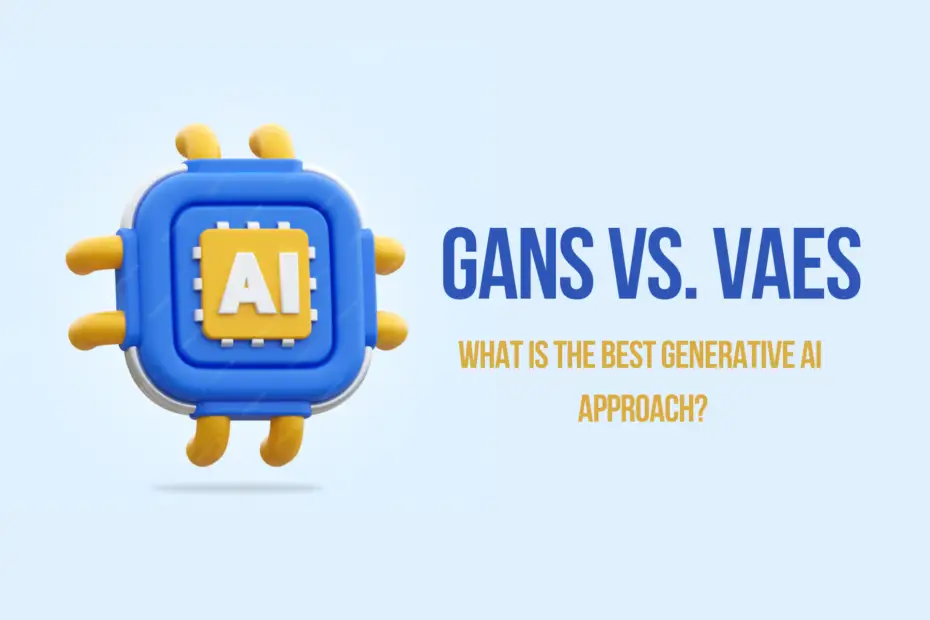Generative Adversarial Networks (GANs) and Variational Autoencoders (VAEs) are two of the most popular approaches used to create AI-generated content. Generally, GANs are more widely used for generating multimedia content, while VAEs are more commonly employed in signal analysis.
So, what does this mean in terms of practical and tangible value? Generative AI techniques assist in creating AI models, synthetic data, and realistic multimedia content, such as voices and images.
Although sometimes used to create deepfakes, they can also produce realistic voiceovers for movies and generate images from brief text descriptions. Additionally, they help in discovering drug targets, recommending product design choices, and enhancing security algorithms.
How do GANs work?
Ian Goodfellow and his fellow researchers at the University of Montreal introduced GANs in 2014. They have proven to be extremely promising in generating various types of realistic data.
Yann LeCun, Chief AI Scientist at Meta, has stated that GANs and their variants are “the most interesting idea in machine learning in the past decade.”
Initially, GANs were used to generate realistic speech, particularly by matching voices and lip movements to produce better translations. They have also been used to translate images, differentiate between night and day, and delineate dance movements across bodies. When combined with other AI techniques, they enhance security and create better AI classifiers.
The real mechanics of GANs involve the interaction of two neural networks that work together to generate and then classify data that represents reality. GANs create content using a generator neural network, which is tested against a second neural network: the discriminator, which determines if the content appears “real.” This feedback helps to shape a better generator network.
The discriminator can also detect fake content or content that does not belong to the domain. Over time, both neural networks improve, and the feedback helps them learn to generate data as close to reality as possible.
How do VAEs work, and how do they compare to GANs?
VAEs were also introduced in 2014, but by Diederik Kingma, a scientific researcher at Google, and Max Welling, who holds the research chair in machine learning at the University of Amsterdam. VAEs also promise to create more efficient classification engines for various tasks, with different mechanics.
Fundamentally, they rely on neural network autoencoders composed of two neural networks: an encoder and a decoder. The encoder network optimizes for more efficient ways of representing data, while the decoder network optimizes for more efficient ways of regenerating the original dataset.
Traditionally, autoencoding techniques have been used to clean data, enhance predictive analysis, compress data, and reduce the dimensionality of datasets for other algorithms. Variational Autoencoders (VAEs) take this a step further by minimizing the errors between the raw signal and its reconstruction.
“VAEs are extraordinarily powerful in providing almost original content with just a reduced vector. This also allows us to generate non-existent content that can be used without a license,” said Tiago Cardoso, Product Group Manager at Hyland Software.
The most significant difference observed when comparing Generative Adversarial Networks (GANs) and VAEs lies in how they are applied. Pratik Agrawal, a partner in the digital transformation and AI practice at management consulting firm Kearney, mentioned that GANs are typically used for processing any type of images or visual data.
He notes that VAEs are better suited for signal processing use cases, such as anomaly detection for predictive maintenance applications or security analysis.
Use Cases of Generative AI
Generative AI techniques such as GANs (Generative Adversarial Networks) and VAEs (Variational Autoencoders) can be utilized in a seemingly unlimited array of applications, including but not limited to:
- Implementing chatbots for customer service and technical support.
- Deploying deepfakes to mimic individuals.
- Enhancing movie dubbing.
- Composing email responses, dating profiles, resumes, and essays.
- Creating photorealistic art in a specific style.
- Proposing new medicinal compounds for testing.
- Designing physical products and buildings.
- Optimizing new chip designs.
- Composing music in a particular style or tone.
Given that VAEs and GANs are examples of neural networks, their applications may be limited in real commercial examples, as noted by Agrawal. Data scientists and developers working with these techniques must connect the outcomes to the inputs and conduct sensitivity analysis.
It’s also crucial to consider factors such as the sustainability of these solutions and determine who manages them, how often they are maintained, and the technological resources required for updates.
It’s worth mentioning that a variety of other techniques have recently emerged in generative AI, including diffusion models, which are used for generating and optimizing images; transformers like Open AI’s ChatGPT, widely used in language generation; and neural radiance fields, or NeRF, a novel technique used for creating realistic 3D media from 2D data.

